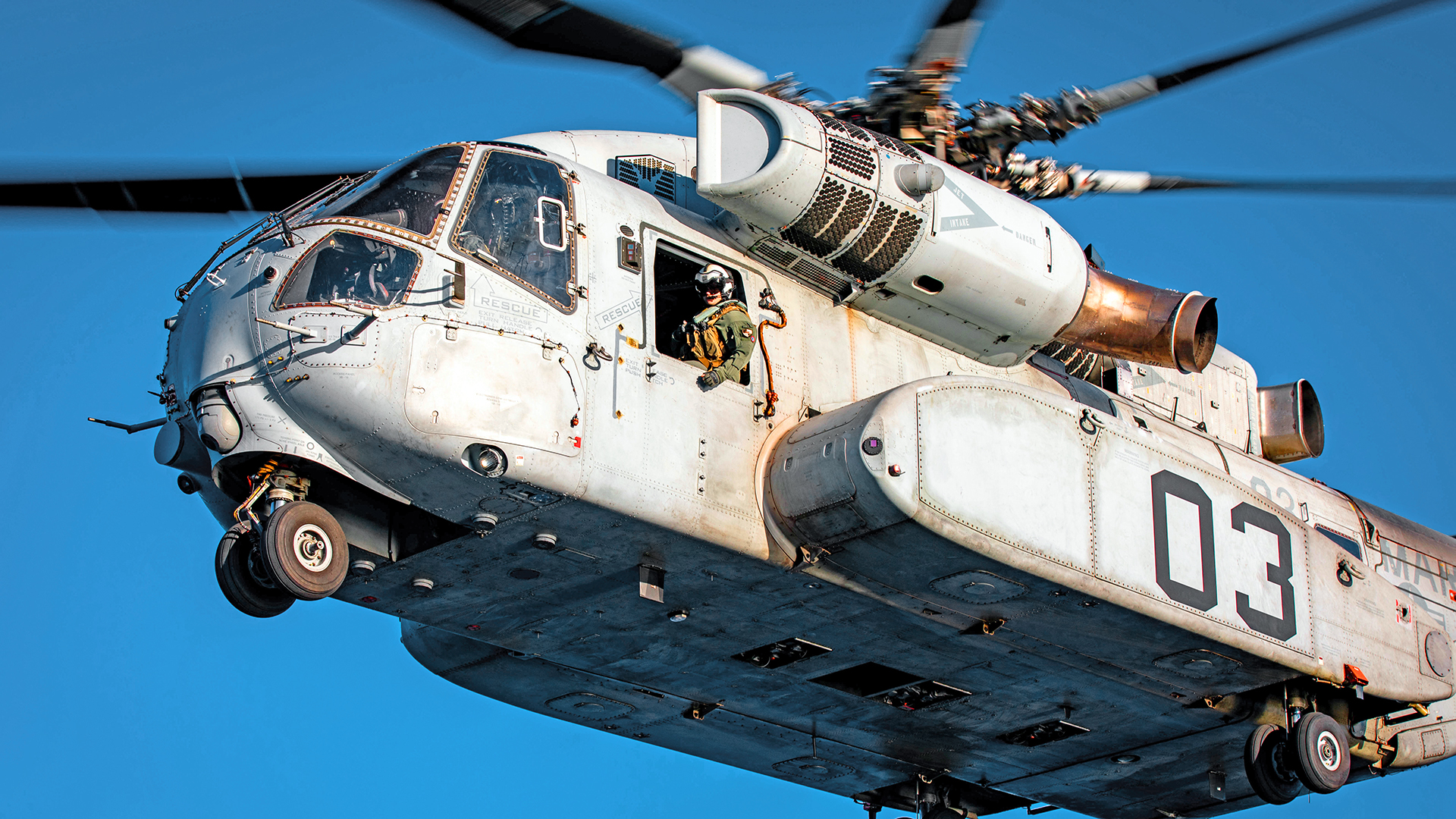This afternoon, Marine Operational Test and Evaluation Squadron One (VMX-1) finally became whole when they welcomed their last detachment of aircraft home to Marine Corp Air Station Yuma with the arrival of the CH-53K King Stallion.
Since VMX-1 was established in 2016, when the Marines took their MV-22s from Marine Corp Air Station (MCAS) New River to MCAS Yuma, the squadron always had a Type Model Series (TMS) detachment that operated away from the squadron’s home station. Now, with the arrival of the first of two CH-53Ks, VMX-1 can fully operate as its planners had envisioned over a decade ago by flying large training events with all of the crewed aircraft slated for its inventory — F-35s, MV-22s, AH-1s, UH-1s, and CH-53Ks — integrated as one team over the Yuma ranges.
Editor’s note: This is the fifth and final entry in a multi-part series covering VMX-1’s highly unique mission, diverse stable of aircraft, and the critical role it is playing in shaping the future of Marine Corps aviation. You can check out the other installments here, here, here, and here.
The CH-53K, known as the King Stallion, has the same physical footprint as the older CH-53E Super Stallion it is due to replace, but is significantly more capable in terms of lift capacity and features a glass cockpit and fly-by-wire technology to further improve performance and reduce pilot workload. It can carry external loads up to 27,000 pounds across distances of more than 100 miles. The Marine Corps hopes to buy 200 of them over the next several years.
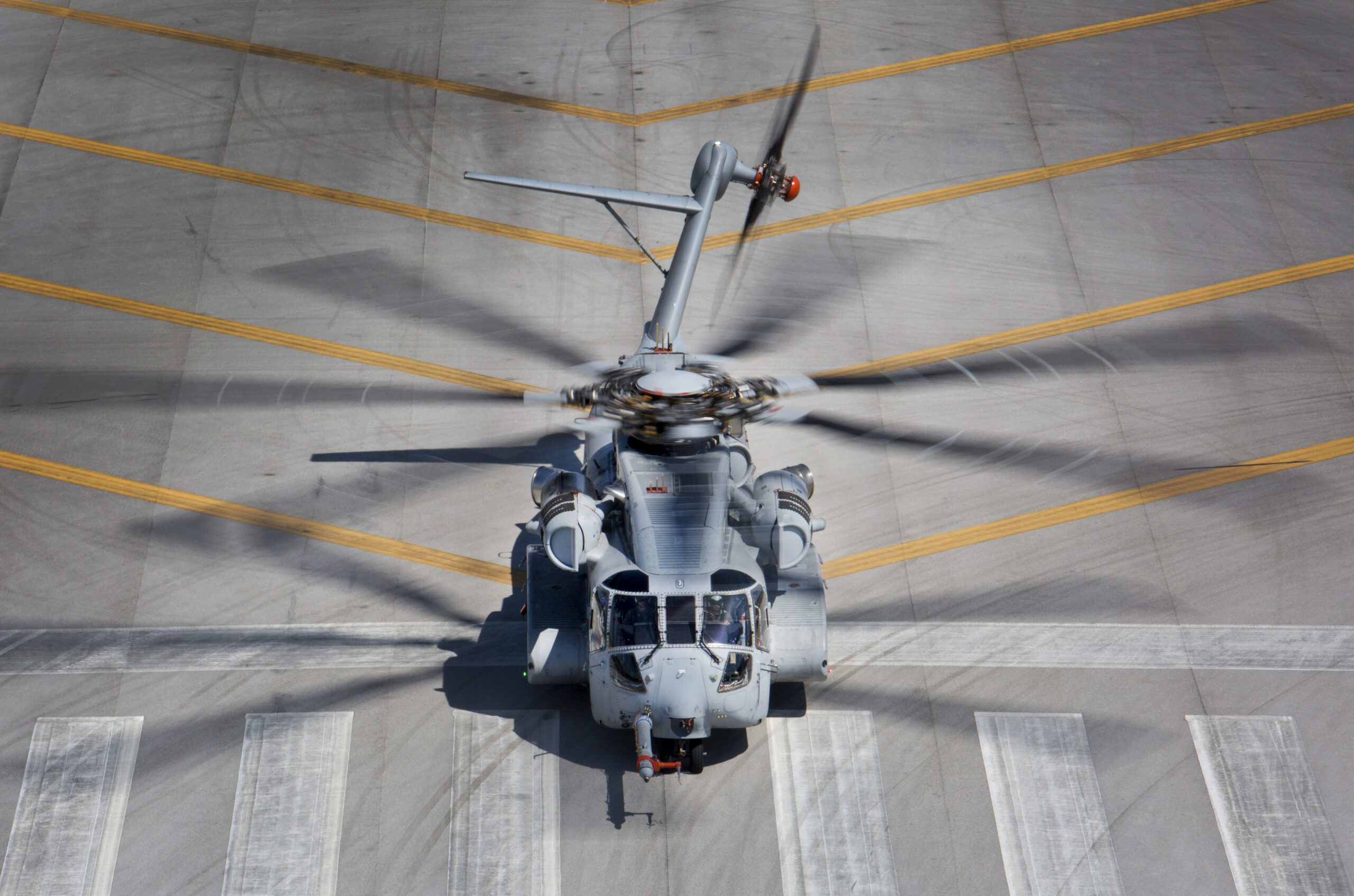
The aircraft left MCAS New River for the cross-country flight piloted by Lt. Col. Adam “Mongo” Horne and Lt. Col. W.Z. “Gypsy” Crittenden. Horne served as the officer in charge of the Heavy Lift detachment at New River and helped the CH-53K reach Initial Operational Capability (IOC). Horne and Crittenden were welcomed onto the flightline at Yuma by Col. Brad “Spicoli” Hipp who serves as the commanding officer of VMX-1. Hipp, who is about to transition to a new assignment in Hawaii, told The War Zone:
“The arrival of the Kilo in Yuma is very important to VMX-1. Having the whole team together under one roof allows us to do the experimentation and demonstration that we want. We can do things individually with our platforms which prove capability and weapons and software, but really the strength of this unit when compared to other Operational Test squadrons, or other squadrons in general, is our ability to integrate. To integrate across all our TMSs, with the most recent additions of platforms with the newest software, the newest weapons and then we can really get after things that our stand-in force is going to need to do in our Expeditionary Advanced Base Operations (EABO) execution. And so that’s kind of where I see the unit. We are on a trajectory now with two new hangers and all the platforms under one roof in Yuma and we’re really going to be able to take it to the next level.”
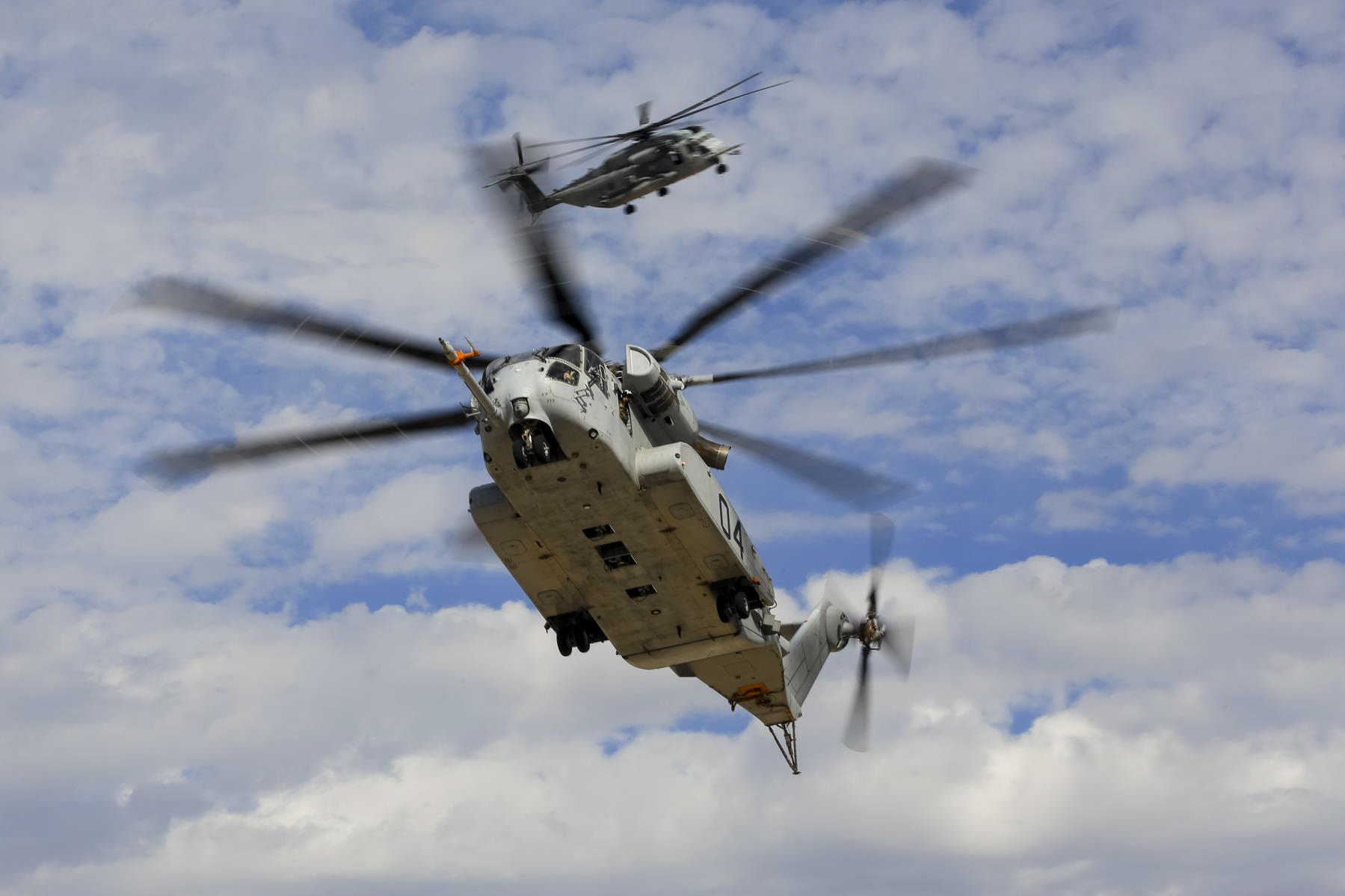
While Hipp is a fighter pilot by trade with hundreds of hours in the F/A-18 and F-35, he has had the chance to fly the CH-53K. Asked about the experience, he told us, “I cannot be a bigger fan of this airplane. As a guy that has never had any helicopter training, with one simulator ride and competent pilot, they had me landing the airplane and doing landing patterns and making small adjustments in the hover. All of the things that are really challenging to do in a helicopter are easier due to an amazing flight control system. While I never flew the Echo, from what I heard, it’s a bear to fly and you would not dare take your hands off the controls. I remember hovering and struggling a bit and Mongo looked over to me and said, ‘Sir, take your hands off the controls.’ I did and the airplane immediately stabilized. That’s how good this airplane is. The takeaway is that in our Echo you had to really focus on flying and not as much focusing on the mission and tactics. The Kilo allows the pilots to focus more on the mission.”
For the last few years, VMX-1’s CH-53K detachment had been very busy on the East Coast at MCAS New River as they helped the aircraft through Integrated Operational Test and Evaluation (IOT&E). It was conducted from July 30, 2021 to April 11, 2022 in accordance with a comprehensive DOT&E-approved test plan. It involved VMX-1 flying over 450 hours over the course of 114 test flights. To cover different environments, these flights occurred in desert, mountainous, and forested environments and aboard the USS Tripoli during both day and night flight operations at sea. During this phase, the detachment had four aircraft and 10 pilots and about 90 maintainers. Lt. Col. W. Z. “Gypsy” Crittenden served as the CH-53K Operational Test Director at VMX-1 during this time.
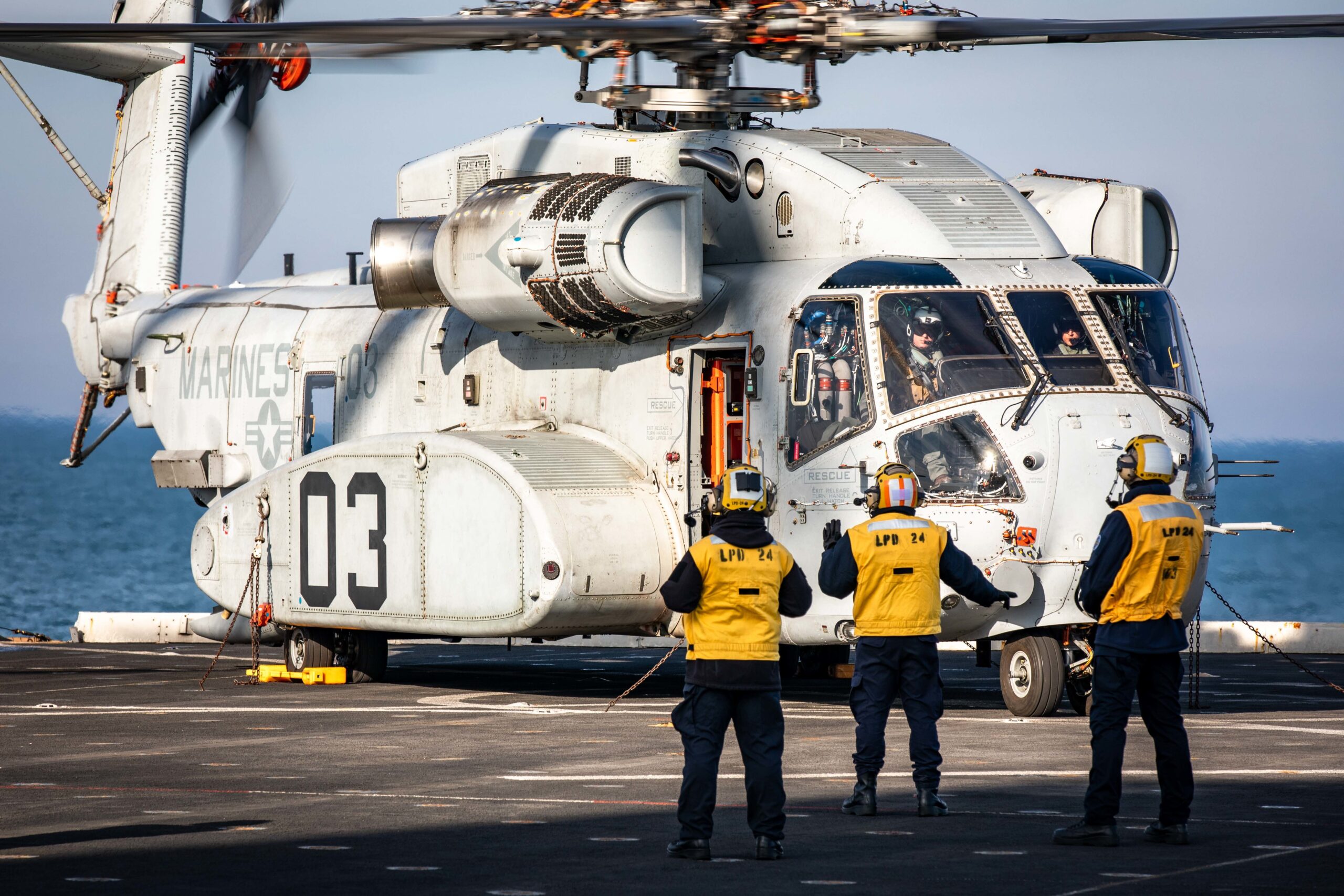
“I’ve been a -53 guy my whole career. I came into the Marines in 2007 and showed up to North Carolina and the fleet here in 2010. I flew the CH-53E on and off in the fleet for about 12 years. The Marines were kind enough to send me over to VMX-1 as a Major. I participated in IOT&E, and then shepherded that all the way through its completion. After that we did the next phase of tests beyond that. Other than one year out of the cockpit where I was a forward air controller, I’ve pretty much spent my whole career in the cockpit of -53 with about two or three years of CH-53K experience.”
Crittenden is on his second tour at VMX-1. His first time with the squadron saw that the program was delayed,so he went back to the fleet and was flying for another two years as a Major and then came back in 2020. He explained:
“Originally, IOC was supposed to happen in 2015, and there were some technical issues with the aircraft. It resulted in a delay. The aircraft was ultimately ready for primetime at the end of 2020. We received our first aircraft from the factory, ready to start conducting training for IOT&E. We had a combination of probably the 10 best pilots. I think it was like three Lieutenant Colonel’s, five or six Majors, and some Captains that were fresh out of their fleet tour. We also had a whole host of maintainers, a few of which had been embedded in the West Palm Beach [at Sikorsky] detachment. So, they had been down in West Palm Beach prior to this, basically seeing and getting on the K all the way back in like 2015. We had about 100 people including the 10 pilots, and I would say it was a broad swath of people across our -53 community. We had a bunch of other folks that came from all walks of life to form this detachment.”
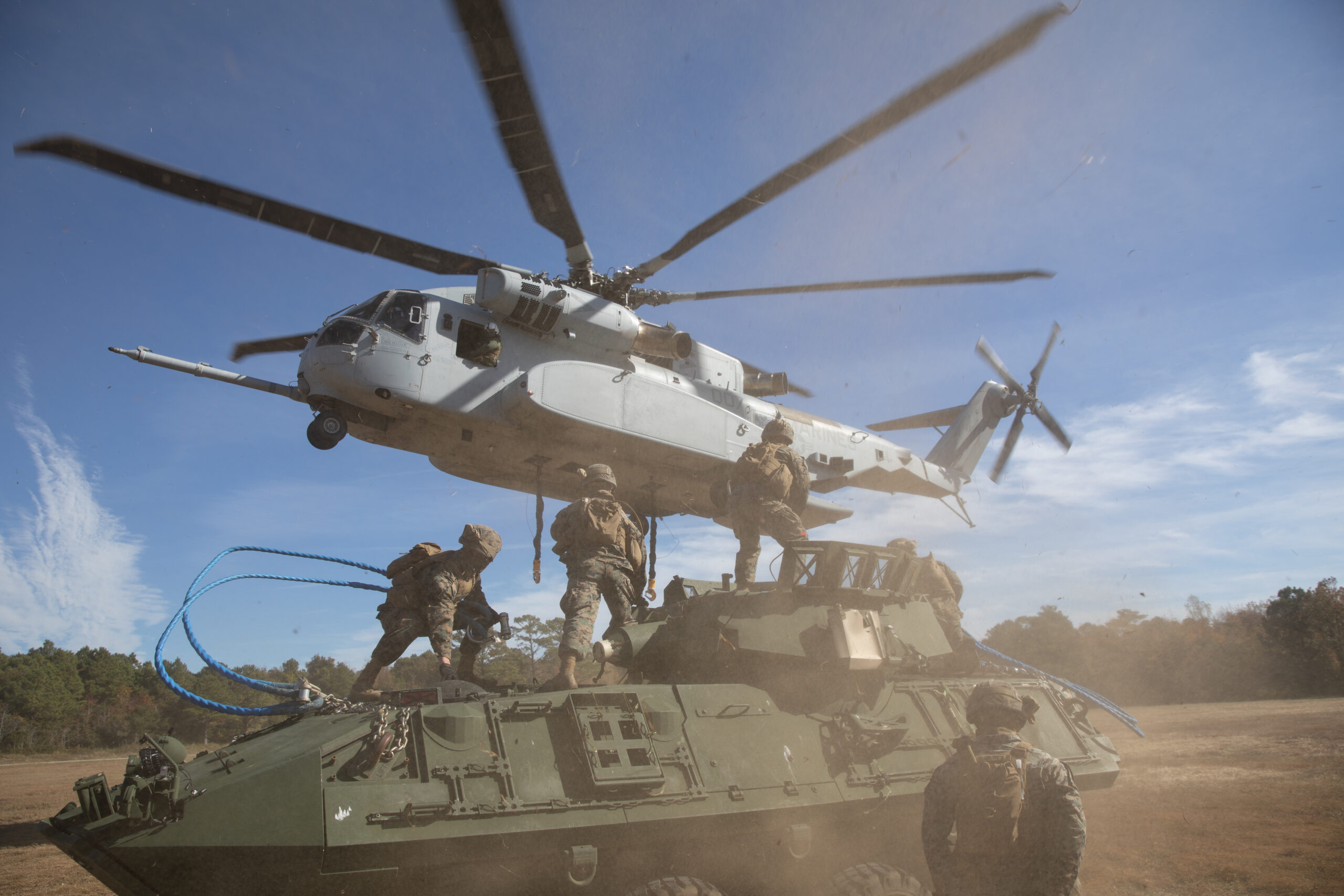
Crittenden continued: “We got our first aircraft in March of 2021, roughly. We started basically training and flying from there. Lt. Col. Batcha was the test director here at the time, and he had been a previous developmental test pilot early on in the program down in West Palm Beach, so we kind of used him as the seed corn, along with a civilian contractor pilot from Sikorsky.”
Once VMX-1 got everyone to a comfortable level of proficiency to begin testing, they started IOT&E. It included a desert phase which was done at MCAS 29 Palms, and a forested phase and an at sea phase. Those two were done out of MCAS New River. With initial testing done, the Marine Corps declared Initial Operational Capability (IOC) for the CH-53K helicopter in April 2022, when HMH-461 became the first operational squadron to receive, maintain, and operate the CH-53K King Stallion. They did that with a tremendous amount of support from VMX-1. With both HMH-461 and the VMX-1 detachment sharing the same flightline, IOC was made a lot easier.
Crittenden added: “After IOT&E and getting all the data we needed for the test letter, if you will, we chopped I would say 60% of the detachment and we pushed them over to HMH-461. We started training those guys early and we sort of did like a phased approach to give them the relevant people they needed to start training the squadron. We also chopped them four aircraft. They now had what they needed. They had four aircraft and they had at least a detachment of people that were appropriately trained and equipped in accordance with Marine Corps standards. With these people and aircraft, they could declare IOC out of the squadron. From IOC HMH-461 worked on building up combat power as quickly as they could to try to keep the transition going.”

Even after declaring IOC, there were still a host of improvements needed prior to a deployment. This included getting the aircraft in the data network which is known as Digital Interoperability Medium. They began test planning for that which would get the aircraft in a deployable MEU configuration. There were also things that needed some attention, including work on the cargo floor and on the aircraft’s winch system. Another area that needed testing was bringing the CH-53Ks survivability equipment up to speed. The upgrade was known as the Data Transfer Unit DECM (Defensive Electronic Countermeasure) System Replacement (DDSR). These improvements include upgraded radios and survivability equipment with both radar and IR countermeasures and an updated data transfer system for cyber hardening. VMX-1 conducted DDSR Integrated Test with the HX-21 while on the East Coast, so they got a good first look and identified some issues ahead of time saving time with duplicating efforts.
Crittenden added: “Getting Digital Interoperability Medium allows us to get into the Link 16 and ANW-2 data network when we’re deployed, as well. We’ve been planning for that all the way through this past year and we’ve been doing integrated tests up in Patuxent River with HX-21 because they had the only aircraft that had that configuration. We anticipate getting an aircraft in that configuration very soon.”
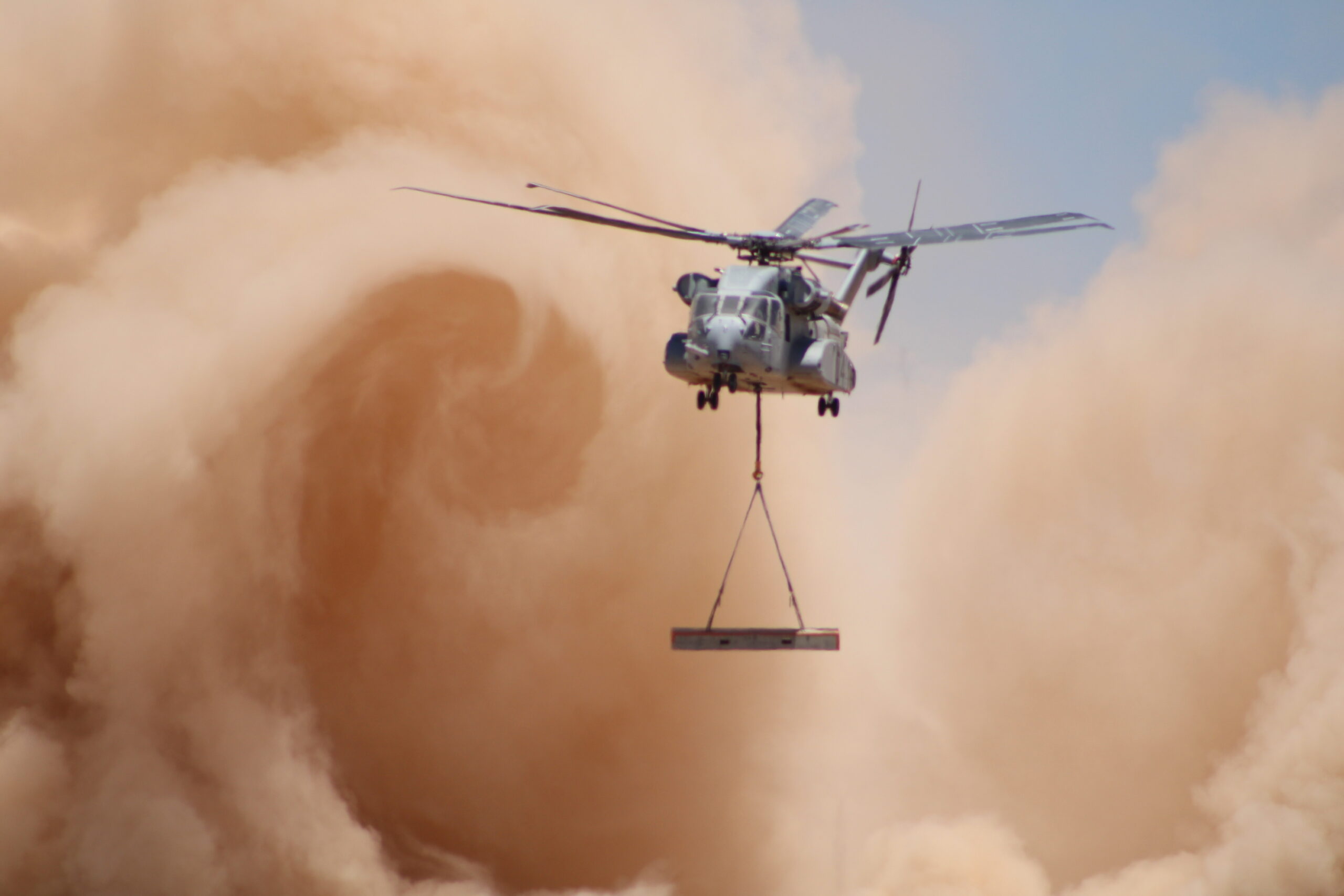
Digital Interoperability (DI) is a big part of the CH-53K and is needed if the aircraft is going to operate over the long over-water distances of the Pacific. Once VMX-1 gets an appropriately configured aircraft in Yuma, they will do some more testing and operate with the other aircraft that are part of the MAGTF. Col. Hipp explained, “we recently did similar DI testing with the H-1s so we have the expertise, testers, and engineers here so it will be a great addition once we get that kit on the airplane.” Plans are to test the DI kit on the CH-53K some time in the fall in Yuma as part of an exercise. This will be a first look at DI specifically with ANW-2 which works in the Marine centric data network as well as link-16.
The other thing tests conducted as part of the Integrated Test were secondary missions. Crittenden explained: “For us secondary missions consist of all the fast rope, repel, aerial delivery of both cargo and people and water operations such as helo cast and ladder ops. So we, alongside DT down here at New River, conducted all the secondary missions and then wrote discrepancies and evaluated the secondary missions and then updated the publications for that. So, the fleet can now do secondary missions when they deploy.”
The CH-53K program office is also hard at work trying to come up with a solution to the biggest problems before a MEU deployment, including an unsatisfactory winch, and a tendency for the aircraft to squat when cargo was being loaded on the ramp. All of the upcoming fixes to these issues will get the CH-53K into the ideal configuration, which is the capacity to take two 463 Lima pallets of 10,000 pounds apiece (20,000 pound total internal payload) and move it around the battlespace.
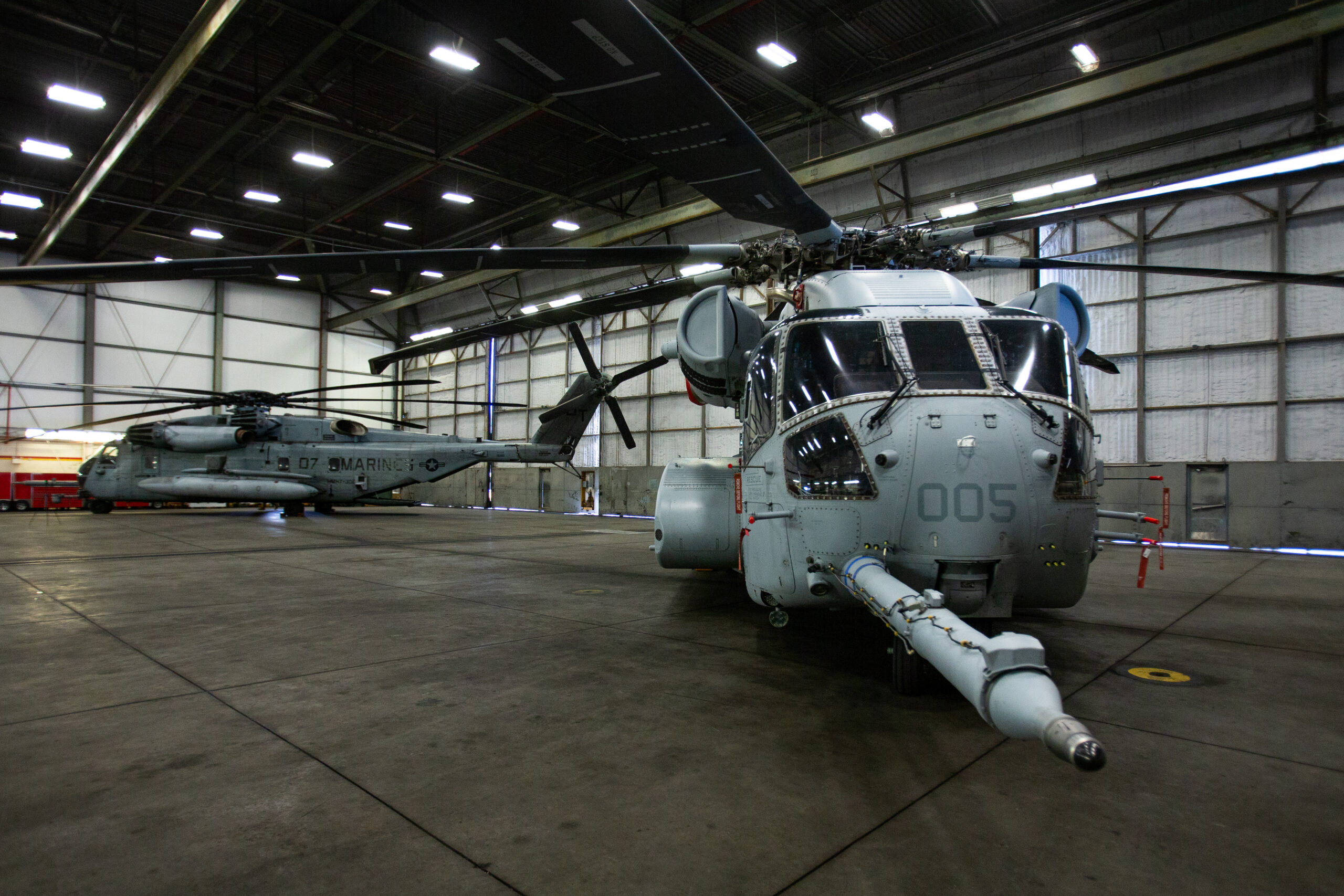
HMH-461 has given back to VMX-1, sending over one of their best, as VMX-1 looks to begin integrating the CH-53K into a host of large exercises, including the internal exercise Obsidian Iceberg. Maj. “Flood” Metcalf recently arrived in Yuma, having previously served as the executive officer of HMH-461. Hipp told us “Flood has a lot of experience so he is the perfect fit. We are also getting another pilot that will head up the Assault Support Division at VMX-1. That person is a test pilot and they will look over not only the CH-53K but also the H-1s and the MV-22s.”
“Like any new platform, I don’t think we have fully comprehended how much capability the K will bring to the fight. We have certainly done some airborne nodes in the back of the CH-53E and this airplane is going to make that even better. It’s got more lift capability, more range, and has sixth generation radios, so I think we have yet to prove how much these capabilities can be optimized on the battlefield. That is the perfect reason why we need all these assets under one roof here in Yuma. We have everything here like the command and control Marines so we can go up and do things that prove digital interoperability with other platforms like the F-35 and H-1s.”
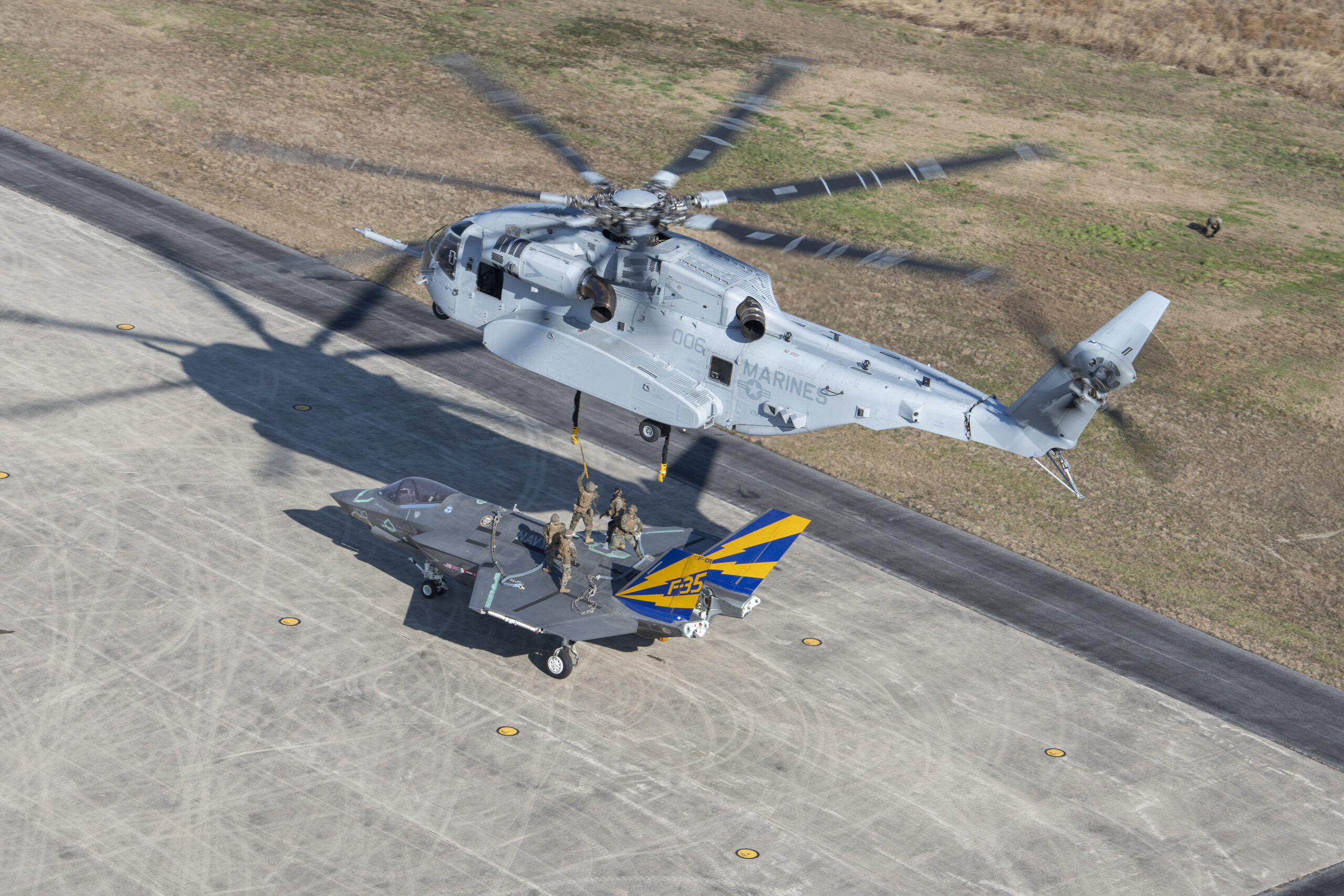
The second CH-53K that VMX-1 will be receiving is currently still in New River getting modifications including the DDSR mod and a cockpit armor upgrade. These modifications should be done by the end of the summer, at which time the squadron will fly the aircraft to Yuma, bringing the total of two aircraft, three pilots and about 20 Marine maintainers along with about a dozen contractors. As new aircraft come off the line in Connecticut, VMX-1 should be receiving a new deployable configured aircraft in the coming months. That aircraft will have the DDSR upgrade and a Digital Interoperability Medium kit.
While moving the CH-53K detachment to MCAS Yuma has its benefits, it also has some drawbacks with the main one being access to spare parts. With a focus on standing up the CH-53K on the east coast first, VMX-1’s aircraft are far from the supply line. Hipp explained, “we thought hard and long about moving the det [detachment] out to Yuma. We have a supply pack up with MALS-13 [Marine Aviation Logistics Squadron] here in Yuma. We will have a time where we need something that will have to come across the country if something unusual breaks. but we do have a supply chain here that is ready to support.”
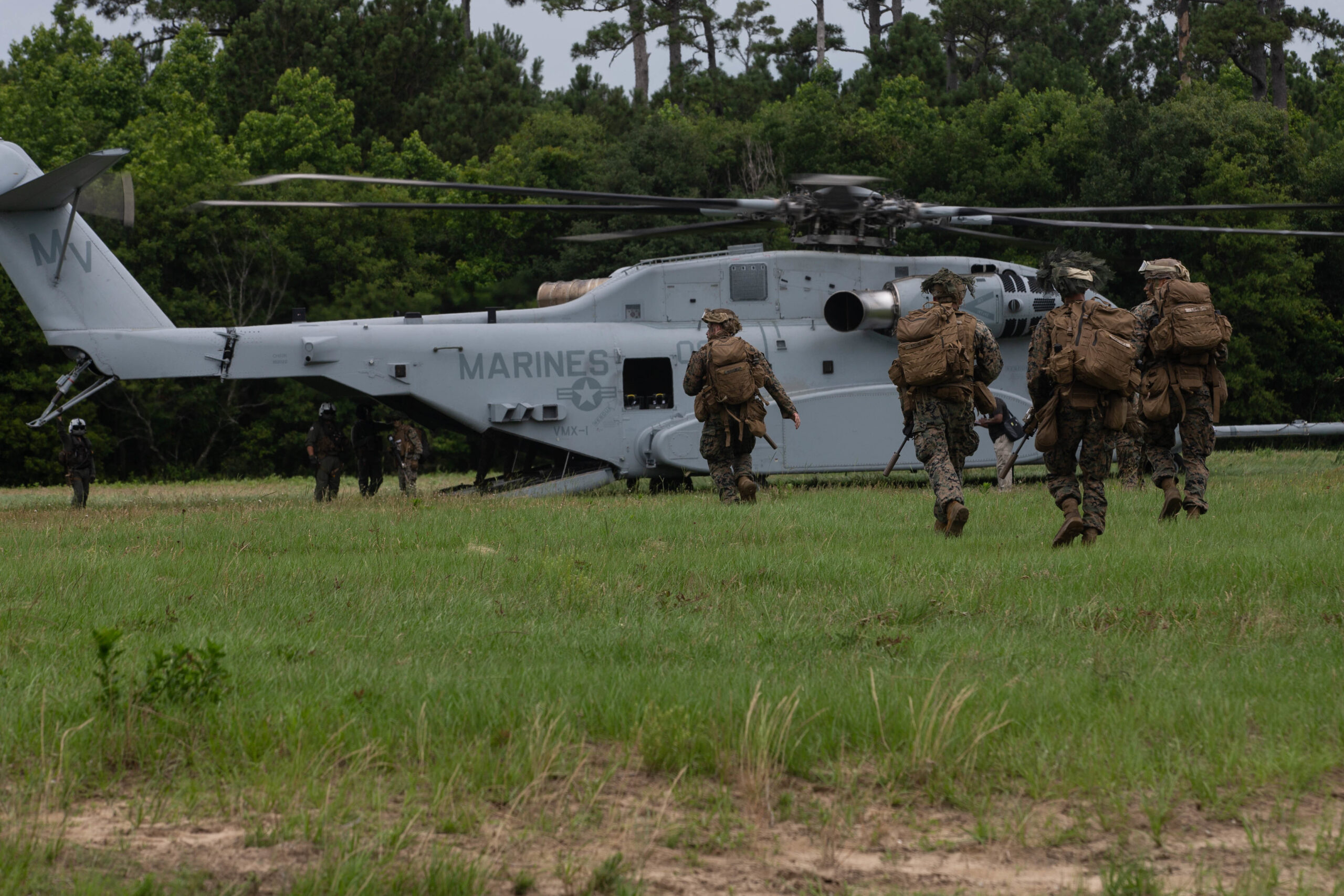
VMX-1 will now quickly begin to integrate the CH-53K into a host of Marine Air Ground Task Force exercises and WTI (Weapons and Tactics Instructor course) as well as Gray Flag with F-35s which happens in September, as they refine tactics and work on Force Design initiatives. When the CH-53K King Stallion gets deployed from the East Coast sometime in 2026 with a Marine expeditionary unit, it will no doubt be ready for a host of missions thanks to the men and women of VMX-1.
Crittenden finished his thoughts when he told us, “I went from flying the hardest helicopter to fly in the Marines to the easiest.”

Contact the editor: tyler@twz.com
